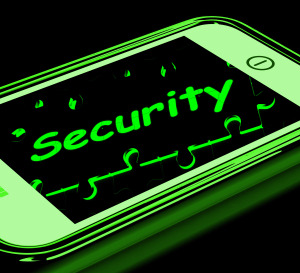
The first step towards keeping your data secure is setting up good passwords. I hate to admit this, but one time I forgot my smart phone at the gym. I had already gotten home and showered before I remembered that I left it on the elliptical machine. The worst part was that I had not set up a password for the phone – so anyone could take my phone and open my emails, access my contacts, and find out a whole lot about me. One simple step could have kept my data secure – setting up a password. Thankfully when I returned to the gym my phone was right where I left it – the alternative could have been a disaster. Needless to say, I immediately set up a password on my phone.
Take a minute to be sure you have set up that first layer of protection to keep your data secure by setting up good passwords. You should have passwords on all your data containing devices, including:
- Smart phones
- Desk top computers
- Laptops
- Servers
- Tablets
What constitutes a good password?
Microsoft suggests doing the following to create a strong password:
- Make it at least 8 characters long
- Don’t use your user name, real name, or company name
- Don’t use a complete word
- Make it significantly different from previous passwords
- Use characters from each of the following four categories
- Upper case letters
- Lower case letters
- Symbols found on the keyboard that is not a letter or number
Microsoft also has an app that will generate a password for you.
Now that you have generated some strong passwords to keep your data secure, how do you remember them all?
Here are some tips to help you create passwords you’ll remember:
- Create acronyms out of information that you would easily remember
- My anniversary is January 1, 2001 could become this password maiJan.1/01
- Substitute numbers, symbols, and misspellings for letters or words in phrases that are easy for you to remember
- Relate your password to a favorite hobby or sport
The first step to keeping the data secure on all the data containing devices you are currently using is to make sure each one is password protected. But keeping your data secure doesn’t end when you stop using those devices – you’ll want to be sure any and all data on your old smart phones, hard drives, laptops and other data containing devices is properly destroyed. Contact us to find out about how our data destruction services can keep your data secure.